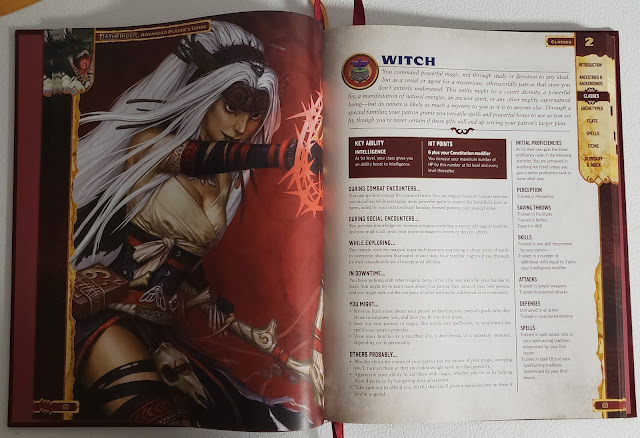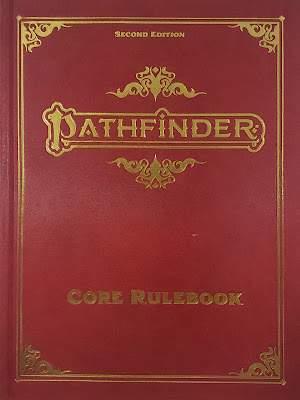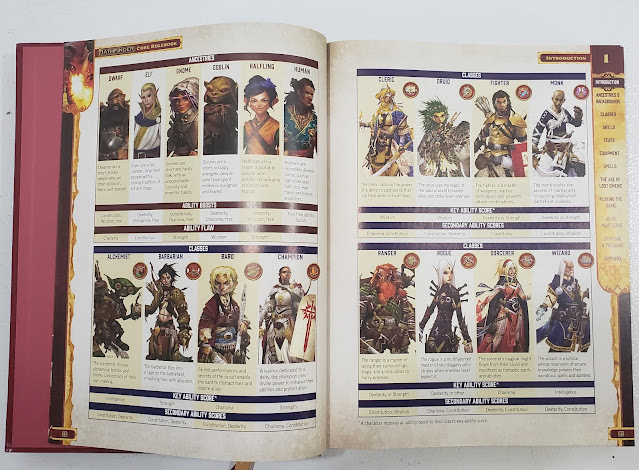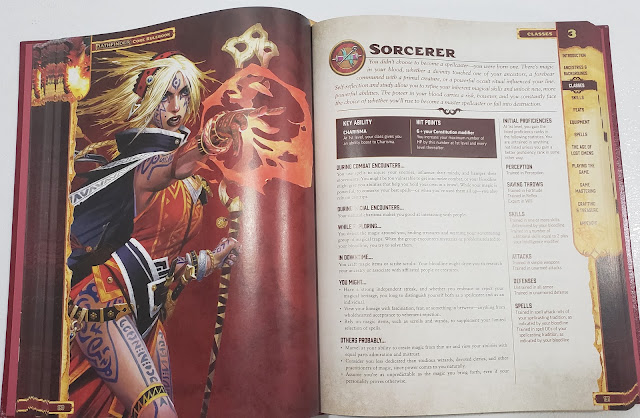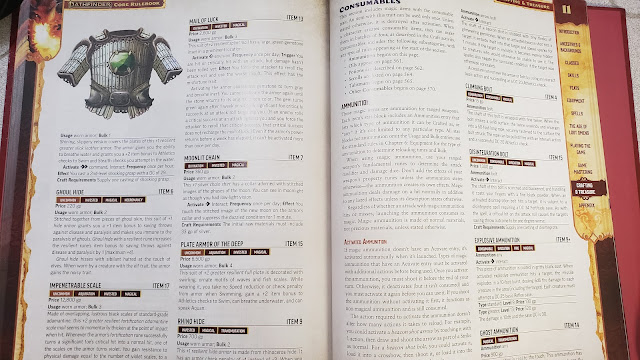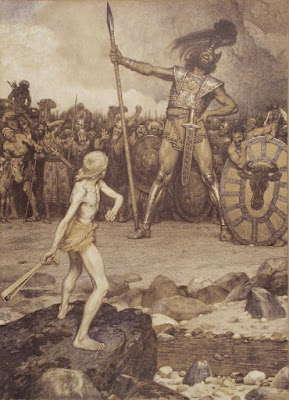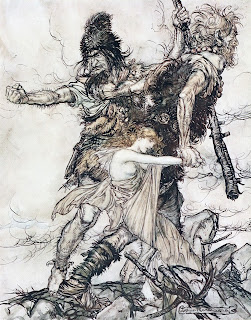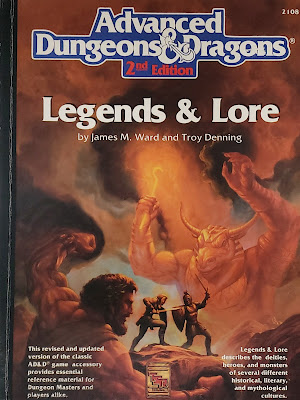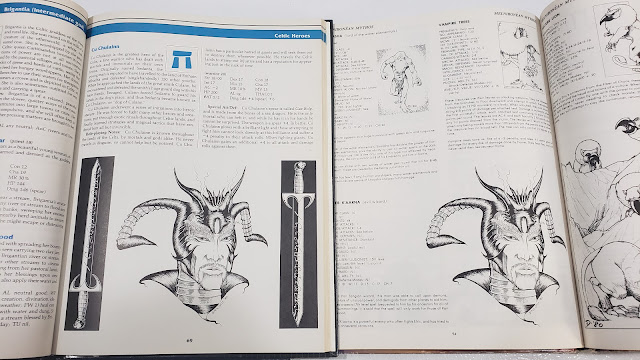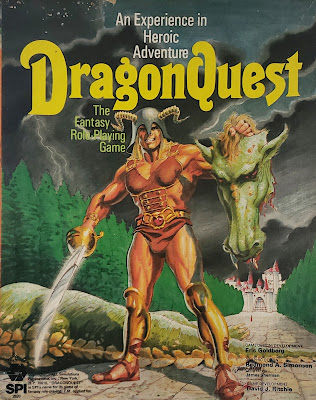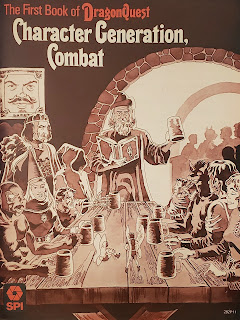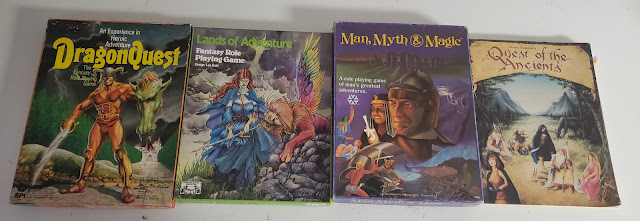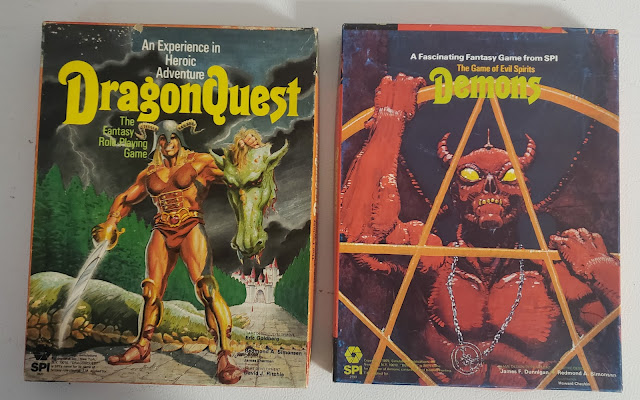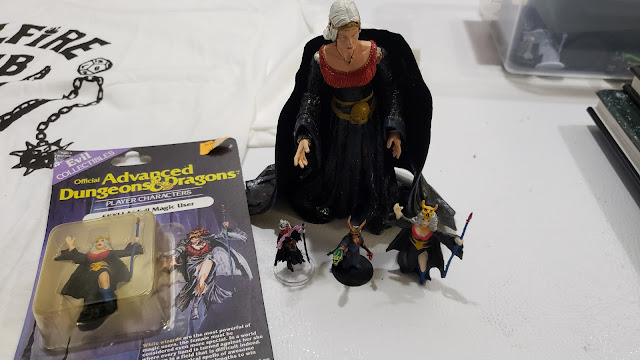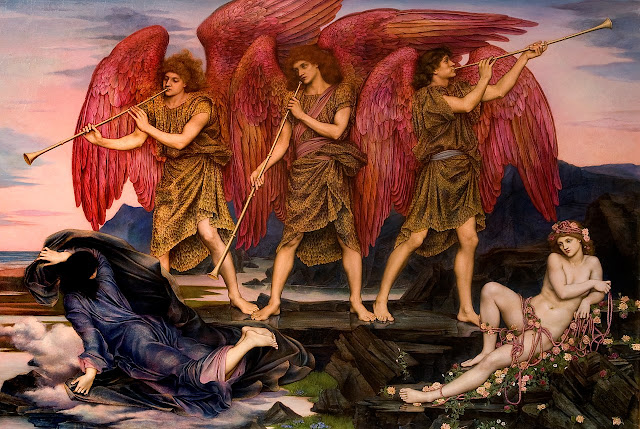Unseasonal Festivities: Dungeons & Dragons Annual 2022
 The Christmas Annual is a traditional thing—and all manner of things can receive a Christmas Annual. Those of our childhoods would have been tie-ins to the comic books we read, such as the Dandy or the Beano, or the television series that we enjoyed, for example, Doctor Who. Typically, here in the United Kingdom, they take the form of slim hardback books, full of extra stories and comic strips and puzzles and games, but annuals are found elsewhere too. In the USA, ongoing comic book series, like Batman or The X-Men, receive their own annuals, though these are simply longer stories or collections of stories rather than the combination of extra stories and comic strips and puzzles and games. In gaming, TSR, Inc.’s Dragon magazine received its own equivalent, the Dragon Annual, beginning in 1996, which would go from being a thick magazine to being a hardcover book of its own with the advent of Dungeons & Dragons, Fourth Edition. For the Dungeons & Dragons Annual 2022, the format is very much a British one—puzzles and games, yes, and all themed with the fantasy and mechanics of Dungeons & Dragons, along with content designed to get you into the world’s premier roleplaying game.
The Christmas Annual is a traditional thing—and all manner of things can receive a Christmas Annual. Those of our childhoods would have been tie-ins to the comic books we read, such as the Dandy or the Beano, or the television series that we enjoyed, for example, Doctor Who. Typically, here in the United Kingdom, they take the form of slim hardback books, full of extra stories and comic strips and puzzles and games, but annuals are found elsewhere too. In the USA, ongoing comic book series, like Batman or The X-Men, receive their own annuals, though these are simply longer stories or collections of stories rather than the combination of extra stories and comic strips and puzzles and games. In gaming, TSR, Inc.’s Dragon magazine received its own equivalent, the Dragon Annual, beginning in 1996, which would go from being a thick magazine to being a hardcover book of its own with the advent of Dungeons & Dragons, Fourth Edition. For the Dungeons & Dragons Annual 2022, the format is very much a British one—puzzles and games, yes, and all themed with the fantasy and mechanics of Dungeons & Dragons, along with content designed to get you into the world’s premier roleplaying game.Published by Harper Collins Publishers, the Dungeons & Dragons Annual 2022 moves on from the Dungeons & Dragons Annual 2021. It is not so much an introduction to Dungeons & Dragons itself, but rather an introduction to Faerûn and the Forgotten Realms, the principal setting for the current iteration of the roleplaying game. The slim volume begins with the first of several entries in the ‘Peoples of the Realm’ series. This is ‘Exploring Elves’, which highlights the various different types of Elves to be found in the Forgotten Realms, noting their special skills and key Classes, as well as some background and some trivia. Included here are the Drow and the Eladrin as well as the High Elves and the Wood Elves. Also mentioned here are the various types of Gnomes, Dwarves, and Halflings, the latter with the comment, “Overlook these diminutive folk at your own risk!”, which the entry and the Dungeons & Dragons Annual 2022 promptly does by consigning all three peoples to a sidebar rather than their own entry in the ‘Peoples of the Realm’ series. It is continued with ‘Think Big’ which suggests with Goliaths, Firbolgs, Orcs, and more as other character options, refencing Volo’s Guide to Monsters and Xanathar’s Guide to Everything. ‘Plane-Touched’ does a similar with races such as the Tritons, Genasi, Tabaxi, and more.
The first of the two ‘Campaign Spotlight’ entries in the Dungeons & Dragons Annual 2022 is on Icewind Dale: Rime of the Frostmaiden, the 2020 campaign published by Wizards of the Coast. This covers the campaign’s key features—its entry points, secrets, new rules, locations, and of course, stats for ‘Three Kobolds in a Trenchcoat’. None of it in any detail, but enough to intrigue the reader. Further, this ‘Campaign Spotlight’ is supported by other articles in the annual. The first of the ‘Across Faerûn’ entries looks at Icewind Dale, which of course is the setting for the campaign, and provides more details such as typical monsters—snowy owlbears and frost giants being the most obvious, along with a gorgeous map of the region. The theme of Faerûn and Icewind Dale even continues in ‘Beyond the Tabletop’, the series which looks at Dungeons & Dragons beyond it being just a roleplaying game. The first of these gives attention to Dark Alliance, the Dungeons & Dragons computer in which the Drow Ranger, Drizzt Do’Urden leads his companions into Icewind Dale in search of the magical shard, the Crenshinibon. Drizzt Do’Urden himself is given the spotlight in the next two articles. First in ‘Heroes & Villains’ which introduces him, his companions, and enemies, and second, in ‘Talking D&D: R.A. Salvatore’, an interview with the author of The Crystal Shard and its many sequels which feature Drizzt Do’Urden. Of course, much of this will already be familiar to fans of Dungeons & Dragons—as is the case for the whole of the Dungeons & Dragons Annual 2022—but from the ‘Across Faerûn’ entry on Icewind Dale through the spotlight on Icewind Dale: Rime of the Frostmaiden to the spotlight on Drizzt Do’Urden and interview with his creator, there is a lovely sense of a theme or thread running through the initial handful of articles in Dungeons & Dragons Annual 2022 and it feels much more thought out.
Whilst ‘Explaining the Planes’ takes the reader beyond the Forgotten Realms to look at the Elemental Planes and the Outer Planes, the Dungeons & Dragons Annual 2022 quickly returns to ‘Across Faerûn’ and ‘The Feywild’ in particular. There is a connection between the two in that the Feywild is a reflection of the Prime Material Plane and also back to the ‘Exploring Elves’ article for Eladrin who come from the Feywild. However, ‘Beyond the Tabletop’ continues the journey away from the Elemental Planes and the Outer Planes by looking at the computer game, Baldur’s Gate III, which mentions Avernus, the first layer of the Nine Hells. The other connection to Baldur’s Gate is a two-page spread dedicated to Minsc (and Boo) in ‘Heroes & Villains’ (his counterpart in the annual, is the villain ‘Xanathar’, whilst if not the Forgotten Realms, but still in the annual, is ‘Vecna’), but the connected ‘Campaign Spotlight’ is Baldur’s Gate: Descent into Avernus. This does as good a job as that devoted to Icewind Dale: Rime of the Frostmaiden.
The ‘Bestiary’ first highlights ‘Common Foes’, so the lowly Kobold at Challenge Rating of 1/8 up to the Manitcore at Challenge Rating of 3, and then ‘Boss Fights’, which includes the Lich, the Tarrasque, and the Kraken, all with a Challenge Rating of twenty or more. ‘Oddities’ add a mix of the different and the weird, like the Gelatinous Cube, the Flumph, and the Modron. Dragons’, the last of these is devoted to iconic monsters and their minions.
There is very little about the play or rules of Dungeons & Dragons, Fifth Edition in Dungeons & Dragons Annual 2022, especially in comparison to the Dungeons & Dragons Annual 2022. ‘Roll for Inspiration’ though focuses on advice and help. First with ‘Combat 101’, which explains the basics of that aspect of the game, whilst ‘Where To Start?’ looks at ways of starting a campaign for the Dungeon Master and ‘Learn From The Dungeon Masters’ gives advice from several Dungeon Masters on how to run Dungeons & Dragons. It is solid, if basic advice. The last entry in ‘Roll for Inspiration’ is ‘Creating NPCs’, which like the others contains solid, if basic advice.
‘Podcasts’ gives time to just the two long running series—How We Roll and Adventure Zone. The former again has a nice callback to Icewind Dale: Rime of the Frostmaiden, but both are given good introductions here. Again, just the two are covered, High Rollers and Acquisitions Incorporated, but ‘Live Streams’ reflects the move from the podcast as a means of presenting actual play to Twitch streams, from audio to visual. The look at the hobby comes up to date with ‘Find Your People’, which give two community groups—No More Damsels and Three Black Halflings—which work to build communities which are more inclusive and welcome greater representation in the hobby.
Elsewhere in Dungeons & Dragons Annual 2022, ‘Where It Began: First Edition’ looks back at Dungeons & Dragons from 1974. It is a very basic examination, with Advanced Dungeons & Dragons given only a paragraph. ‘Classic Campaigns’ similarly looks older scenarios, again in thumbnail fashion, but the tie into Dungeons & Dragons, Fifth Edition is definitely highlighted here. ‘Tasha’s Cauldron of Everything’ looks at everything from character options, magic items, and spells, whilst ‘It Spells Trouble’ examines a variety of spells, from Magic Missile to Wish. Rounding out Dungeons & Dragons Annual 2022 is a quiz and a glossary.
Of course, Dungeons & Dragons Annual 2022 being a British annual, it is not without its puzzles. So there are mazes, word searches, spot the difference, and more. All themed around Dungeons & Dragons. The maze for example, has you attempt to escape from Count Strahd von Zarovich’s clutches, whilst ‘Volo’s (Scrambled) Guide to Monsters’ is an anagram
Physically, the Dungeons & Dragons Annual 2022 is snappily presented. There is plenty of full colour artwork drawn from Dungeons & Dragons, Fifth Edition, and the writing is clear and kept short, so is an easy read for its intended audience. It would have been nice to seen a little more artwork from the earlier versions of the roleplaying where they are mentioned.
Over the years, there have been plenty of introductions to Dungeons & Dragons, some of them decent, some them of utterly pointless and useless, such as the Dungeon Survival Guide and the ‘What exactly were you thinking, Wizards of the Coast?!’ Wizards Presents: Races and Classes and Wizards Presents: Worlds and Monsters books that heralded the arrival of the Dungeons & Dragons, Fourth Edition. Fortunately, like the Dungeons & Dragons Annual 2021, its predecessor, the Dungeons & Dragons Annual 2022 is far superior to any of those.
The Dungeons & Dragons Annual 2022 is not so much an introduction to Dungeons & Dragons, Fifth Edition, as Faerûn and the Forgotten Realms. There is much less of a focus on the rules and mechanics in the Dungeons & Dragons Annual 2022, but in terms of background and setting is genuinely an interesting and informative read. To be fair, this is not a book or supplement that a dedicated player or Dungeon Master is going to need, or even want, to read. After all, much of this will be familiar to either. The Dungeons & Dragons Annual 2022 is very much a step on from Dungeons & Dragons Annual 2021, and that does mean that some of the introductory elements of the roleplaying game as it is played have been lost, but still as some to receive at Christmas (or not) in your Christmas stocking (or not), Dungeons & Dragons Annual 2022 is a good into Dungeons & Dragons, Fifth Edition, and especially, Faerûn and the Forgotten Realms.


